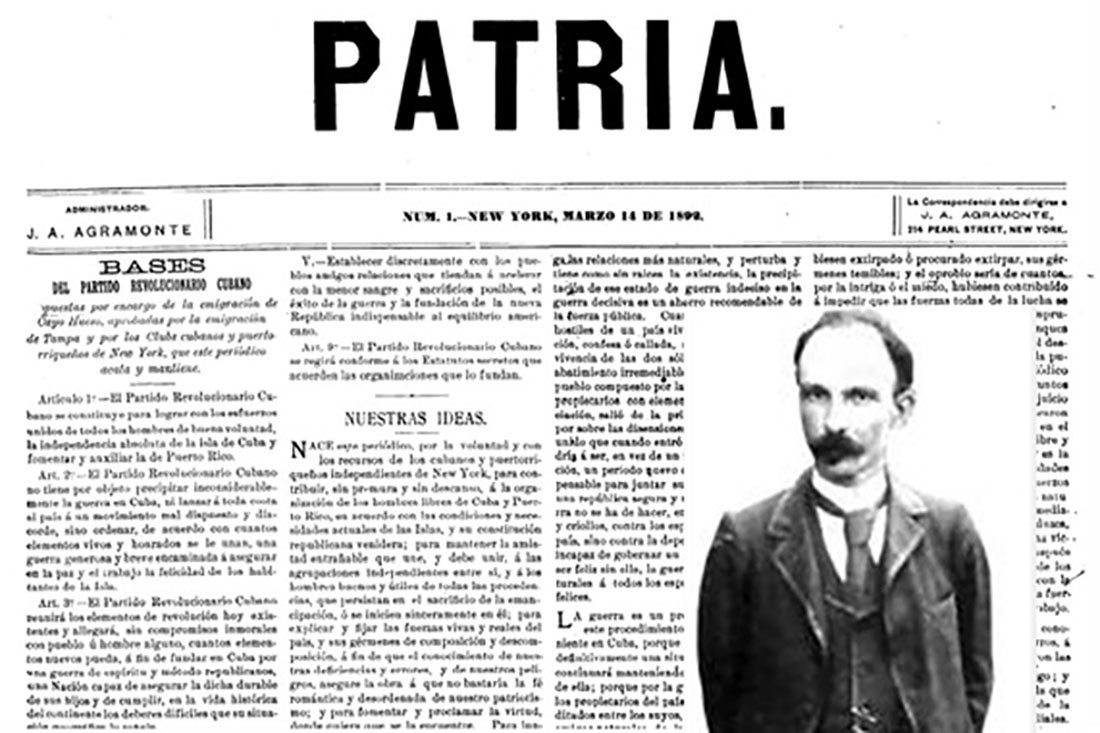With the founding of the Patria newspaper on March 14th, 1892, José Martí not only established a communication system, but also created a platform for revolutionary action that from a political-literary point of view reflected the concerns and preserved the essence and memory of the Cuban people.
This was directed in a first stage (1892 – 1895) by the Apostle. After his death, his management is assumed by Enrique José Varona. In 1897, the journalist from Santiago Eduardo Yero replaced him until in 1898 Tomás Estrada Palma took over as director, leaving the Cuban writer Nicolás Heredia the part of the publishing house.
The voice of Patria
In this publication, a voice with clear authenticity and power is observed that gradually shows a deeper perspective on human acts and issues. According to the researcher Ana María Verde Retana, Patria is a renovating, modern proposal, which corresponds to its own theoretical foundations.
Content and form
In Patria, different ideas and thoughts are appreciated that constitute and are part of a cultural, social and reflective discourse in the form of criticism, editorials, current social news, artistic, literary and historical comments, with the aim of educating and preparing the people.
Among the topics systematically dealt with are: patriotism, unity, the necessary war, the press as an agent of the independence effort, the Cuban Revolutionary Party as a representative of the people, and the heroes of the Great War.
Collaborators
Gonzalo de Quesada was part of its writing; the Puerto Rican Sotero Figueroa, typographer and also a writer; and the Cuban intellectuals Benjamín J. Guerra, Francisco de Paula Coronado and Rafael Serra, among others.
The press as a soldier
In this newspaper, ideas about the media are summarized, when he alleges that: ” The press is one, and its freedom is greater, when in the safe republic it fights, with no other shield than it, to defend the liberties of those who they invoke to violate them, of those who make them merchandise, and of those who persecute them as enemies of their privileges and their authority. But the press is another when the enemy is in front of it. Then, quietly the signal is passed. What the enemy has to hear is nothing more than the voice of attack. That is Patria in the press. It is a soldier”.
Conclusions
Its last issue came out on December 31st, 1898. Despite the fact that its guiding word ceased at the moments when it was most needed, the Patria newspaper, as Ana María herself alleges, is an anti-colonial socio-political-cultural document resulting from Marti’s sharpness and vision.
Bibliography
– Marrero, J. (2018). Dos siglos de periodismo en Cuba. Momentos, hechos y rostros. Editorial Pablo de la Torriente Brau.
– Verde Retana, Ana María (2007). Patria en Martí. Anuario 30 del Centro de Estudios Martianos. Centro de Estudios Martianos.
Translated by: Aileen Álvarez García






